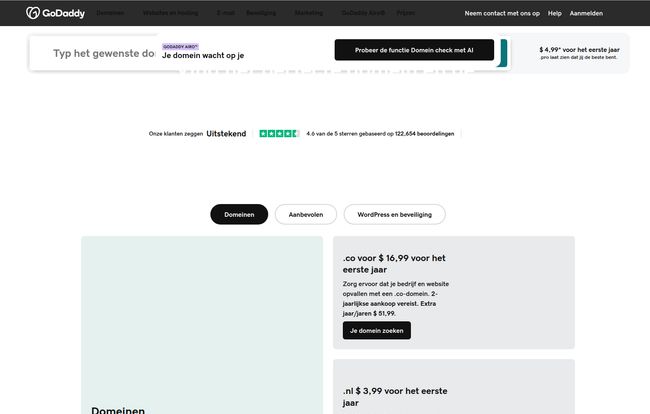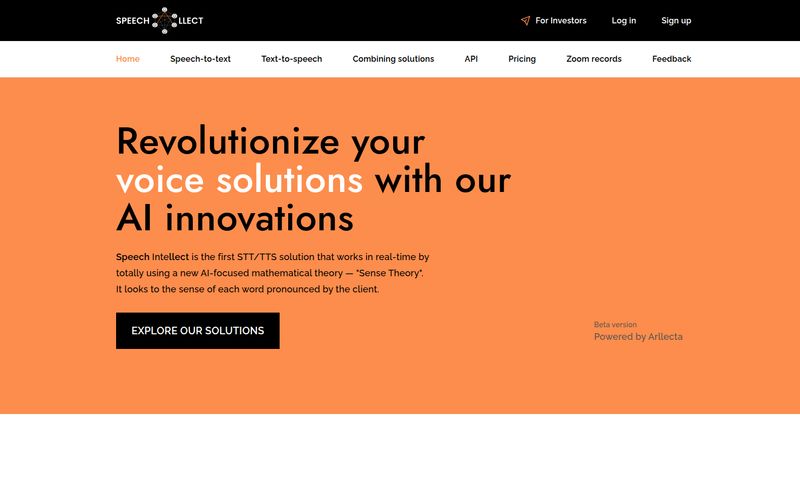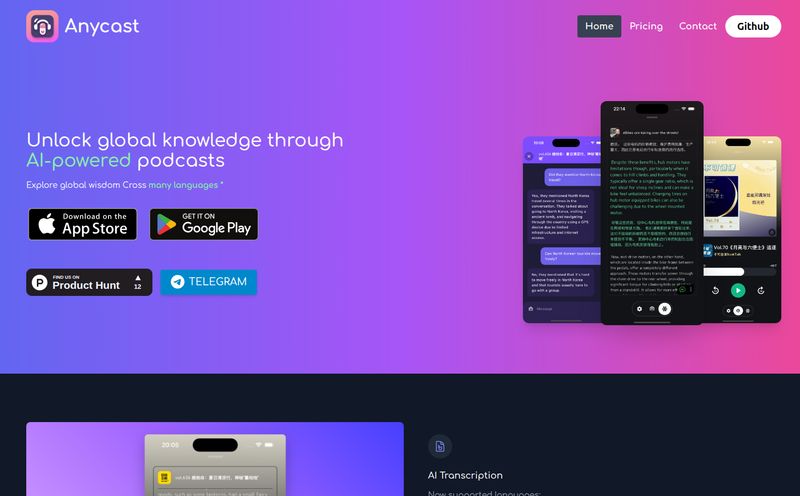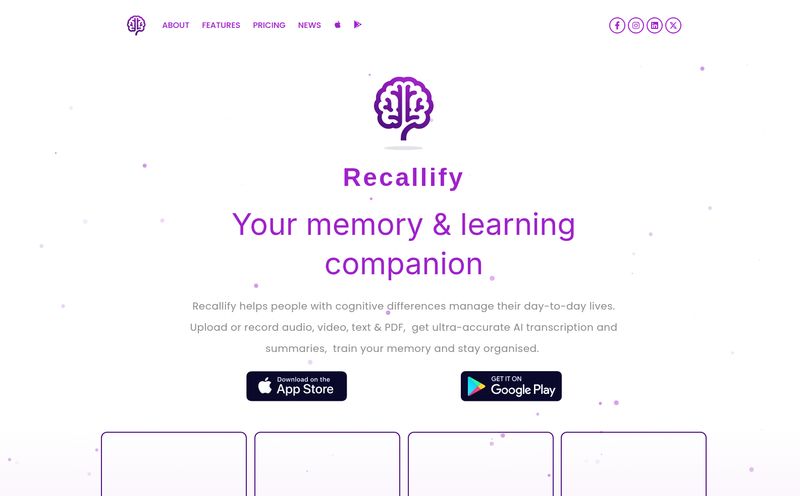Grab a coffee. As someone who's been wrestling with the ever-shifting beast of SEO and traffic generation for more years than I care to admit, I get excited by new tools. Genuinely excited. Especially when they promise to solve a real, nagging problem for content creators. And let me tell you, video subtitles are a nagging problem.
They’re a pain to create manually, but the payoff is huge. We're talking better accessibility, higher engagement, and a massive SEO boost because Google can suddenly read your video content. So when I stumbled upon a tool called Dubtitles, my ears perked up. The pitch was perfect: an AI-powered subtitle generator that could take a video in one of 50+ languages and spit out clean, accurate English subtitles. Sounds amazing, right? A true game-changer for reaching a global audience.
I was all set to dive in, test it out, and write a glowing review about how it would revolutionize your YouTube channel. And then I hit a brick wall. A very expensive, GoDaddy-branded brick wall. This isn't just a review anymore; it's a bit of a digital ghost story.
What Was Dubtitles Supposed to Be?
On paper, Dubtitles was the dream. The core idea was to use artificial intelligence to automatically transcribe and translate audio from YouTube videos and podcasts. For creators looking to break out of their native language bubble, this is the holy grail. I’ve spent countless hours manually transcribing videos, or paying a small fortune for human transcription services. The thought of an AI doing the heavy lifting, especially with cross-language support, is just… chef’s kiss.
The platform claimed to support over 50 languages. Imagine uploading a video in Japanese, Hindi, or Spanish and getting accurate English subtitles in minutes. This opens up your content to the entire English-speaking world, which is a massive market. It’s not just about convenience; it’s about a fundamental shift in audience potential.
The Promised Features That Caught My Eye
It wasn't just a vague promise; the feature set seemed solid and targeted the exact pain points we creators face.
The Magic of AI Transcription and Translation
The main draw was its AI. It wasn't just about turning speech to text, but doing so with contextual accuracy. We’ve all seen YouTube’s auto-captions butcher names, technical terms, or slang. The promise of a smarter AI that understands context is incredibly appealing. While no AI is perfect, a system that gets you 95% of the way there is a monumental time-saver.
Subtitles with an SEO Twist
This is where my professional interest really peaked. Dubtitles advertised SEO-enhanced subtitles. Now, what does that mean? In my world, it means subtitles and a full transcript give search engines a rich, keyword-dense text file to crawl. Suddenly, your video isn't just a black box of pixels; it's a readable document. Google can index every word, helping you rank for long-tail keywords and specific phrases mentioned in your video. It's a tactic I've been preaching for years, and having a tool that automates it is pure gold.
A Pricing Model That Made Sense
Let's talk money. We all have budgets. Dubtitles was apparently using a credit-based system, which I'm honestly a fan of. It avoids teh subscription fatigue that we're all feeling these days. Here’s the breakdown I found:
| Cost | Credits | Value |
|---|---|---|
| $10 | 100 Credits | 1 credit = 1 minute of video |
So, it cost $0.10 per minute of video. That’s pretty competitive. For a standard 10-minute YouTube video, you’re looking at just $1 for a full, translated transcript and subtitles. Compared to services like Rev, which can charge $1.50 or more per minute for human transcription, that's a steal. It's an accessible price point for small creators and large businesses alike.
The Big Twist: A For-Sale Sign on the Digital Door
So, I’ve got my notes, I'm excited about the features, the pricing seems fair... I head over to the website to sign up. And this is what I find.

Visit Dubtitles
The domain, `dubtitles.io`, is for sale. For a cool $4,911. Or you can lease to own it for $226 a month. Well, that throws a wrench in the works, doesn't it? The tool is gone. It's a digital ghost. All that's left is a landing page on GoDaddy where you can buy the name.
This is a story we're seeing more and more in the AI space. It's a gold rush. Someone has a brilliant idea, builds a functional-looking front-end, maybe even a working beta, but for one reason or another—funding runs out, the tech is harder than it looks, a bigger fish comes along—it vanishes. The digital storefront is shuttered, and the only thing left is the real estate.
So, What Can We Learn from the Tale of Dubtitles?
Instead of a tool review, this has become a cautionary tale. But a useful one! Here are my takeaways as an SEO and content strategist.
Lesson 1: Always Vet Your Tools
Before you integrate a new, shiny AI tool into your workflow, do a little digging. Check their social media profiles. Are they active? Look for recent blog posts or updates. Does the company feel alive? In the case of Dubtitles, the 'for sale' page is a dead giveaway, but sometimes the signs are more subtle. A tool that hasn't been updated in a year is a red flag.
Lesson 2: The Idea is Still Gold
Just because Dubtitles is a ghost doesn't mean the concept is dead. Far from it. The need for easy, affordable, AI-powered subtitling and translation is very real. This means you can and should look for alternatives. Tools like Descript, VEED.io, and others offer similar features. The dream is alive, just with a different name on the door.
Lesson 3: The SEO Power of Subtitles Is Unchanged
Don't let this story discourage you from the strategy itself. Subtitling your videos is one of the most powerful things you can do for your channel's growth. It boosts watch time, improves user experience for viewers in loud or quiet environments, opens your content to the hearing-impaired community, and gives Google a transcript to rank. That truth is independent of any single tool.
Frequently Asked Questions About AI Subtitle Tools
Are AI-generated subtitles accurate enough?
They've gotten incredibly good, but they are not perfect. The general consensus is to treat AI subtitles as a fantastic first draft. You'll likely need to spend a few minutes proofreading, correcting proper nouns, and fixing any odd phrasing. But it'll save you 90% of the work.
How exactly do subtitles help YouTube SEO?
Primarily, by giving Google's crawlers a text version of your video. This allows your video to be indexed for specific keywords and phrases spoken in the video, not just the ones in your title and description. It also improves engagement metrics (like watch time), which is a powerful ranking signal for YouTube's algorithm.
What's a good price for auto-transcription services?
The Dubtitles price of $0.10/minute is quite good and sets a decent benchmark for bulk AI processing. Many services now offer subscription tiers, like $15-$30 a month for a set number of hours. Anything under $0.25/minute for high-quality AI transcription is generally considered a fair price in today's market.
Why do so many AI startups disappear like this?
It's a combination of factors. The tech is expensive to develop and run, the market is incredibly crowded, and many startups are built to be acquired rather than to be sustainable long-term businesses. Sometimes the founders simply move on to a new project. It’s the volatile nature of a tech boom.
Can't I just use YouTube's free auto-captions?
You can, and it's better than nothing! However, they are famously less accurate than dedicated AI services. Furthermore, they don't help with translation. If you're serious about quality and reaching a global audience, investing in a dedicated tool to clean up and translate those captions is well worth it.
Final Thoughts
I came here to review a tool, but instead, we uncovered a fascinating, all-too-common artifact of the current AI craze. While Dubtitles may be floating in the digital ether, its spirit lives on. The need it aimed to solve is more relevant than ever.
So, let the story of Dubtitles be a reminder: the strategies and the human needs behind the tech are what truly matter. The tools will come and go, some will be brilliant, some will vanish. But the goal of connecting with a wider audience, of making your content more accessible, and of smartly optimizing for search? That’s here to stay. Now go check your video library and see what needs some subtitle love.
Reference and Sources
- Dubtitles.io For Sale Page - GoDaddy
- YouTube SEO Hub - Backlinko
- Descript - Alternative AI Video Tool
- VEED.io - Alternative AI Video Tool



